
New Hope, Future City Buk-gu
Tour to Buk-gu
Tour to Buk-Gu
Gangdong Mongdol Beach
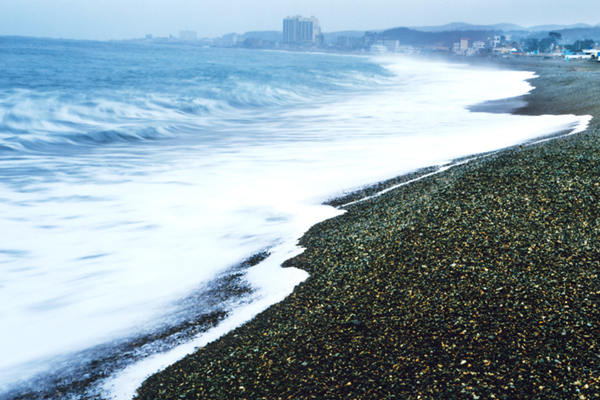
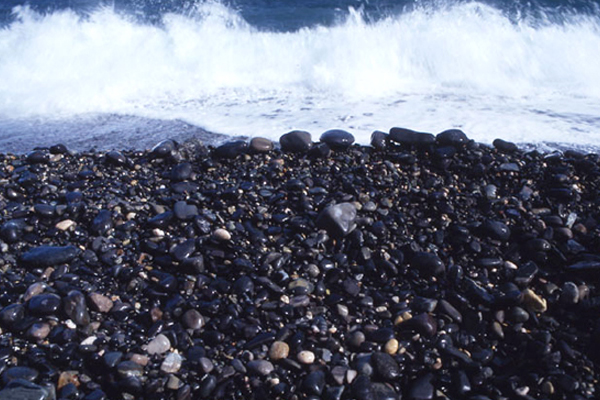
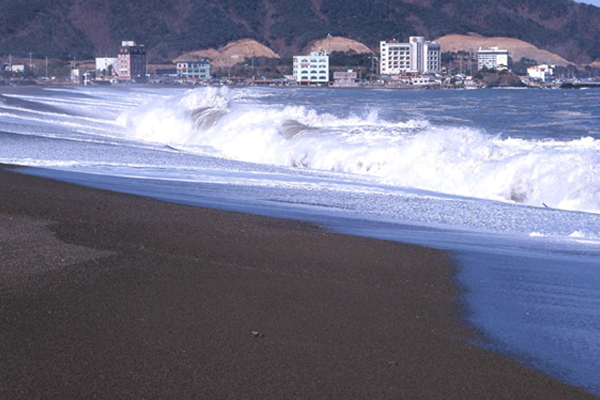
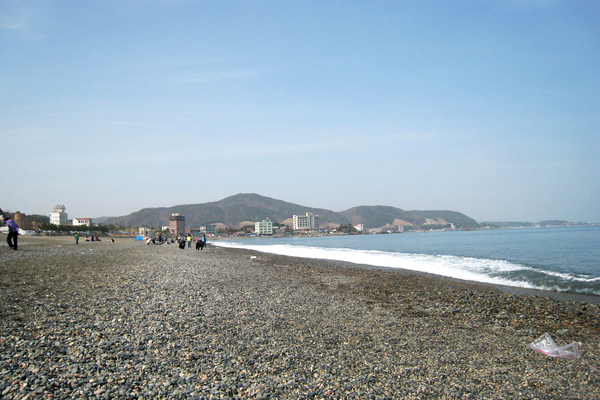
- In Jeongja beach, the clear sea of the Mongdol gravel rolling with Jeongja blue sea sunrise view of the East Sea gives the viewer a new mystic feeling, which gives the admiration of finding the beach. It is round and small like a bird scattered on the beach of Mongdol beach. In addition, the size of the mongdol is regularly distributed, acting as an acupressure when treading with bare feet, and it is popular as a health walkway.
Jeongja port
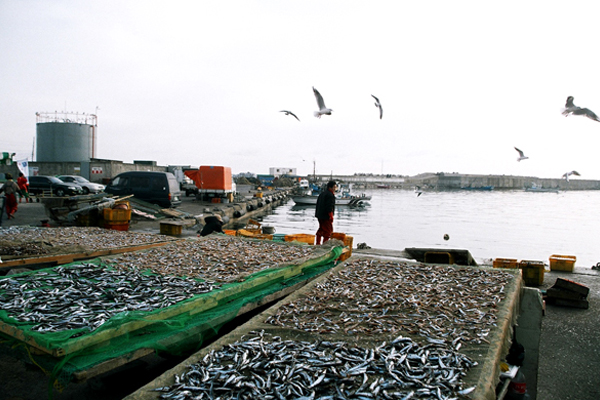
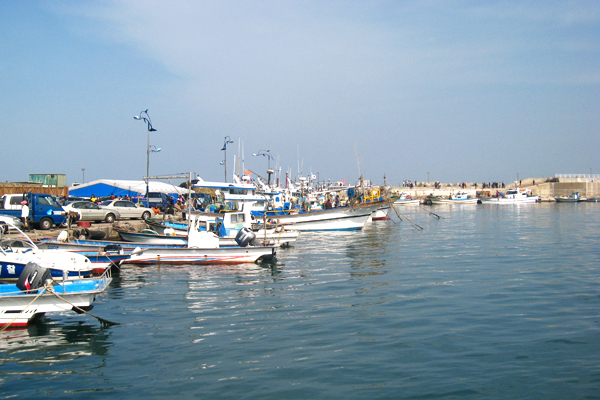
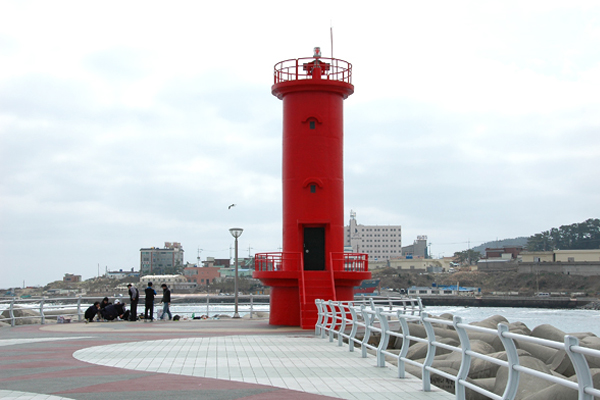
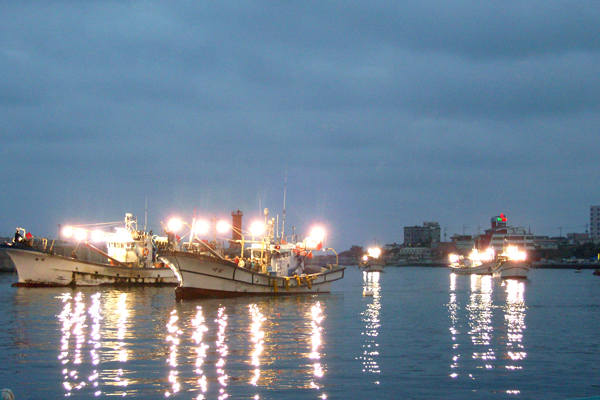
- Jeongja red lighthouse stands tall on the end of a pier at the center of the Jeongja live fish center. The red sun above the gray breakwater gives the tourists a sense of resilience, and the anchovy stomping on the far side of the bay, and the silence of the loners on the breakwater, you can feel the impression which is equal or better than the sunrise in the Chuam in the East Sea or Hangil in the South Sea.
Jejeon Eel Village
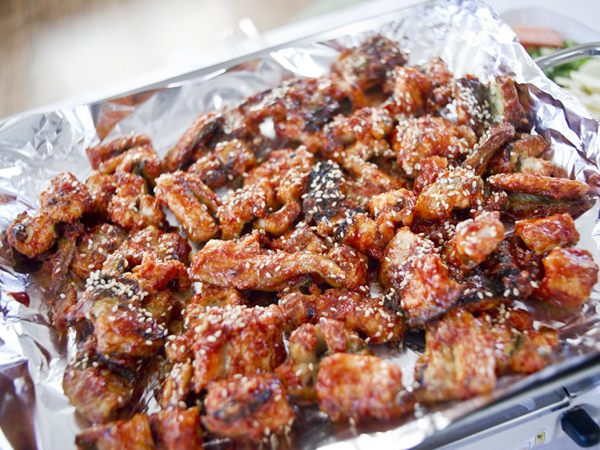
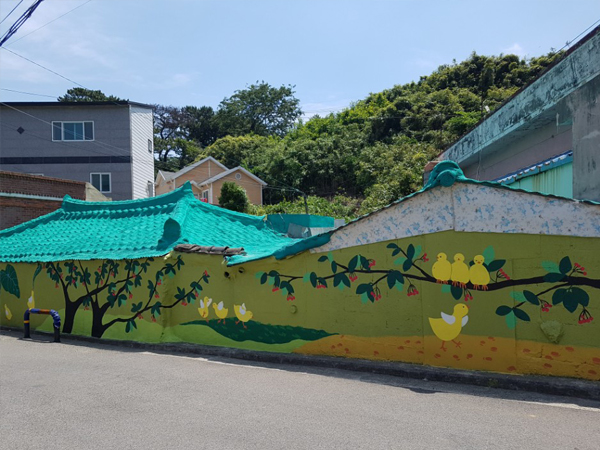
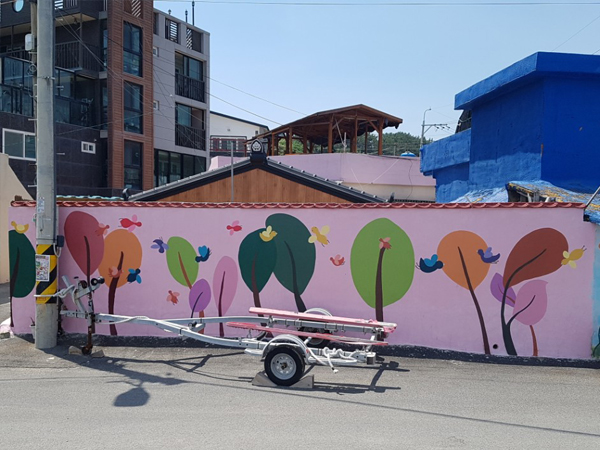
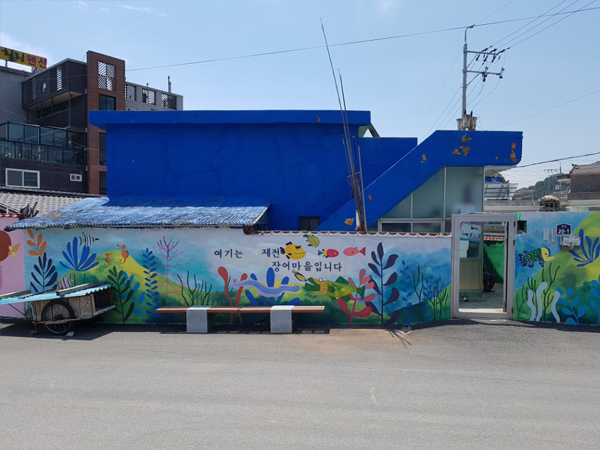
- 10 minutes walk on foot from Gangdong Football Field to Shinmyung village, there is Jejeon village on the right side. There are a lot of eel houses there, so tourists can enjoy sea eel at low price. Inside the small seaport, you can not forget the flavor of the smoked eel roasted in seaweed and savor the fresh sea breeze.
Muryong Mountain
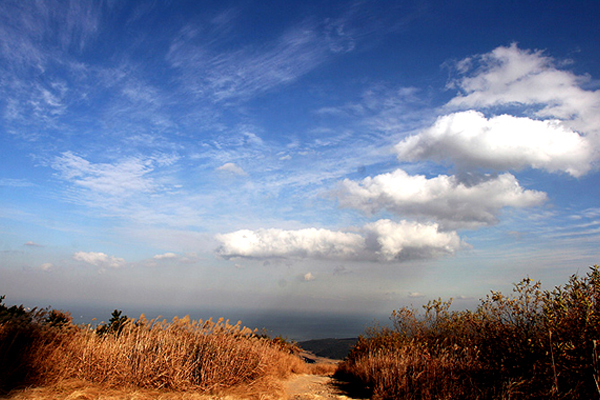
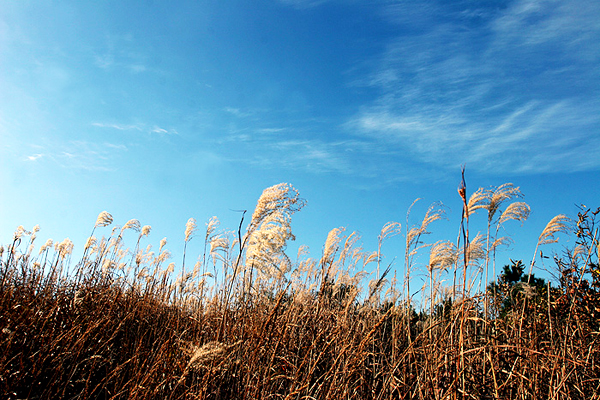
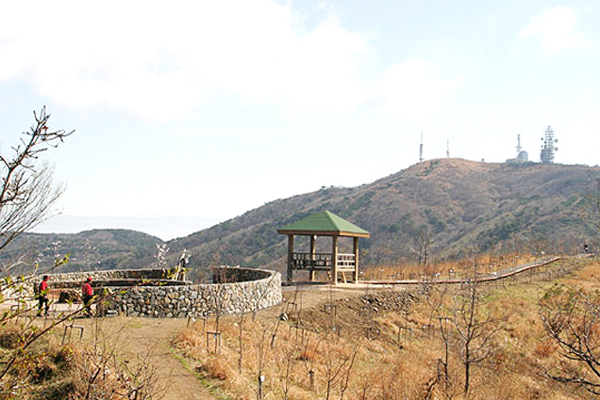
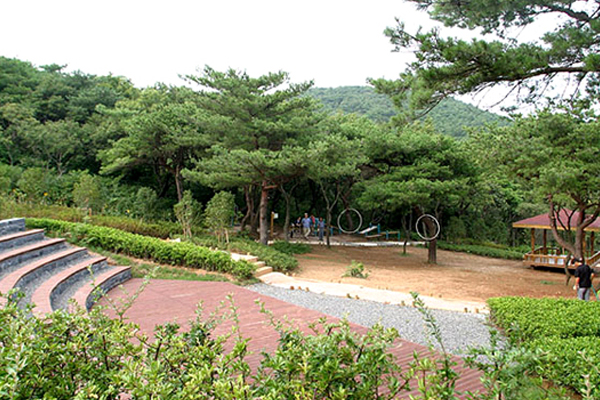
- Muryong Mountain is 451m above sea level, but it connects with the East Sea along the downtown of Ulsan with excellent view from Jeongsan. As a guardian mountain of Ulsan, it has been venerated as a local guardian mountain since ancient times. In the east, you can see fishing boats floating and the blue wave of the East Sea. You can see the Taehwa River stream and the Ulsan industrial complex in the south, and the Ulsan downtown in the west. In the north, you can also see the streams of mountains of Baekdudaegan. It is famous as a sunrise place of the New Year, and well known as a walking course for the night and a family walk because it is located in the downtown.
Gangdong Football Ground
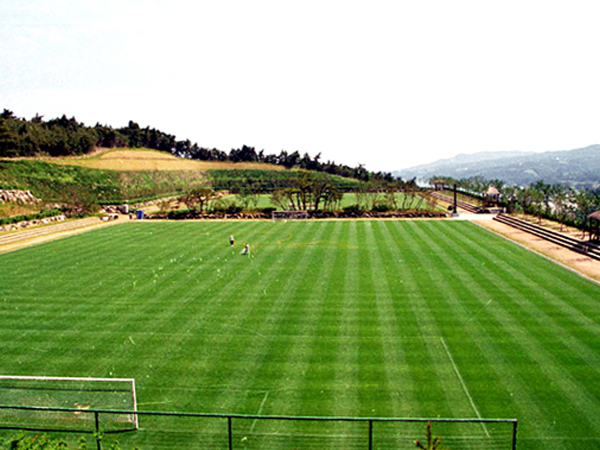
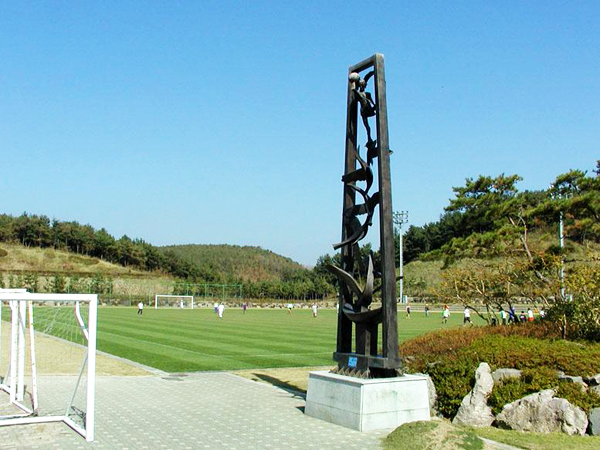
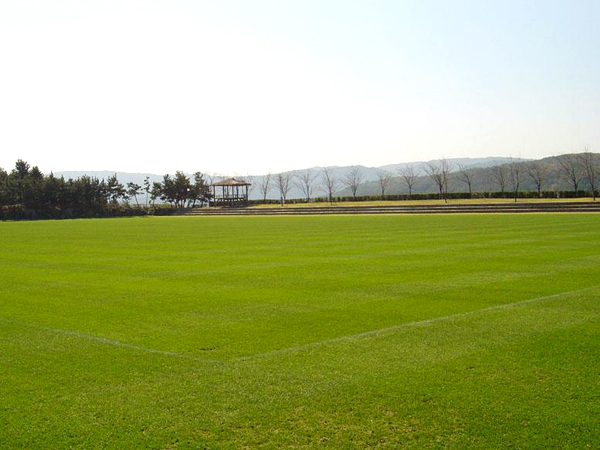
- This Gangdong Football Ground named as "Kangdong Soccer Stadium" named after the former place name, was established by the Korean Football Association for the expansion of the base population through the soccer boom and the technical training of the national team. While most soccer fields in Korea are located in the downtown area, it is located on the hillside looking down the sea. It has a total of 35,000 pyong with three lawn plazas, a promenade, a pond, other facilities and comfortable and cozy environment where you can enjoy the superb view of the East Sea.
Gangdong love way & Nuri road
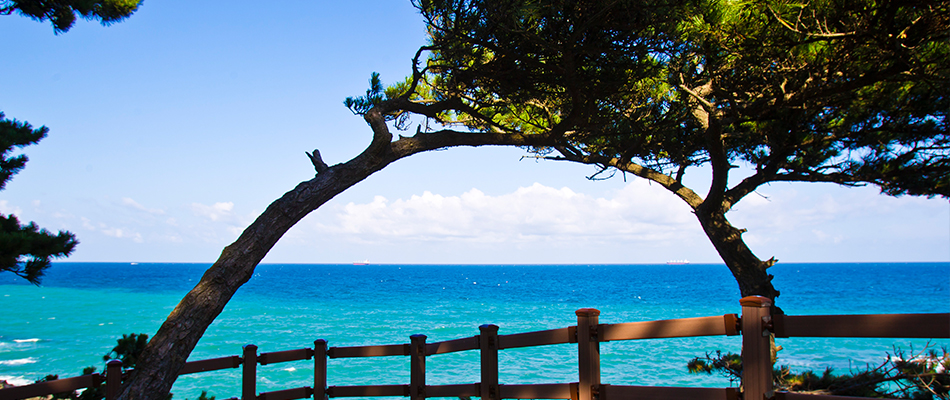
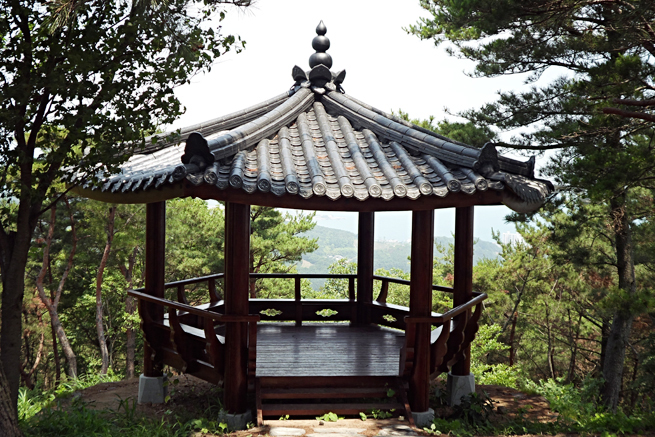
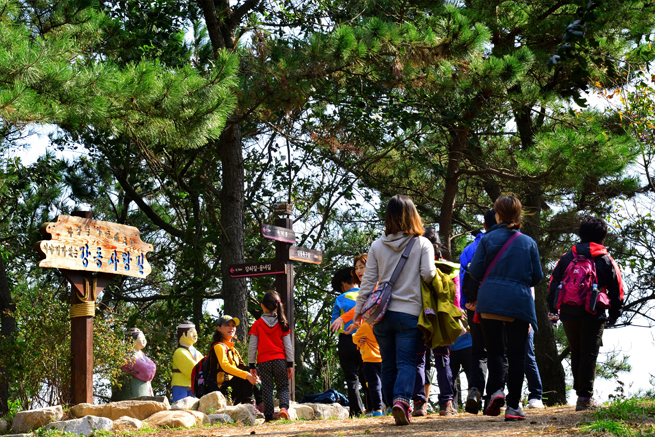
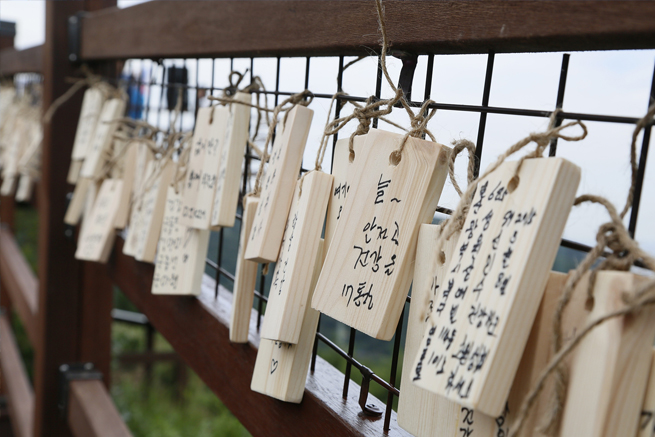
Please download Guidance for more information.
Cypress Forest Bath
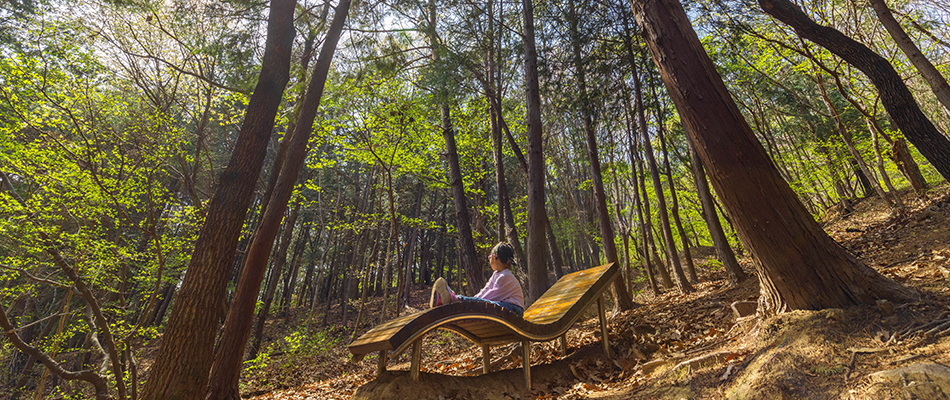
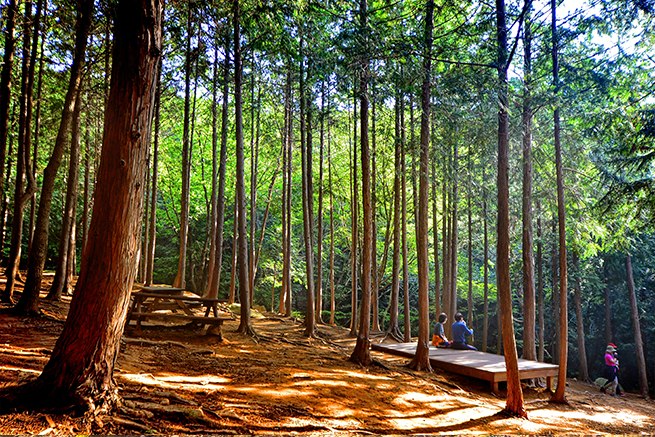
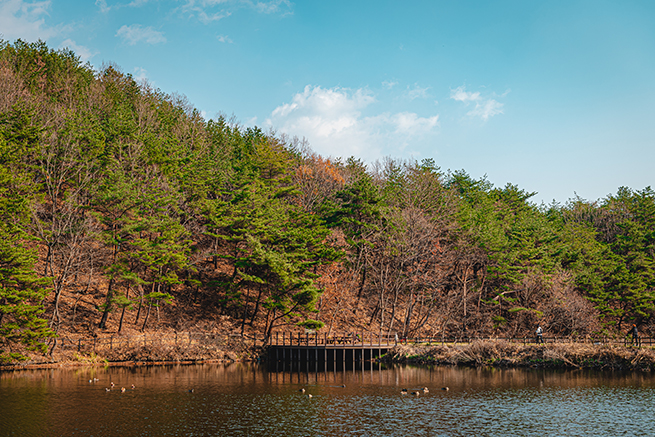
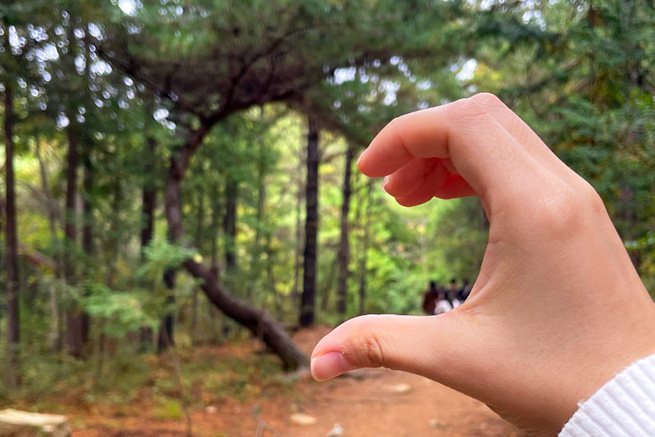
- Chunma Mountain (236m above sea level) in Dalcheon-dong is composed of 5ha of cypress trees, 33ha of pine trees and 2ha of nut pine and spot lighted as a resort of resident. Lookout sheds and picnic tables where the residents can take a rest, the forest guide board and flat floors are installed and Manseokgol reservoir (0.4 km) and ecological waterside view deck and an observation deck are prepared around the top of Cheonman Mountain. The cypress tree is known as an evergreen coniferous tree that is planted mainly in Jeju and southern provinces. It is known also as the tree that emits the largest amount of phytoncide among the conifers and is known to be effective for treating skin diseases such as atopy. Strengthening cardiopulmonary function, antibacterial and diuretic, and dandruff effect are excellent. Chunma Mountain Cypress bath will expand the access road in the future and make it available to more residents.
- Location: 167, Mt. Dalcheon-dong, Buk-gu, Ulsan
Hwadong Pond Waterside Park
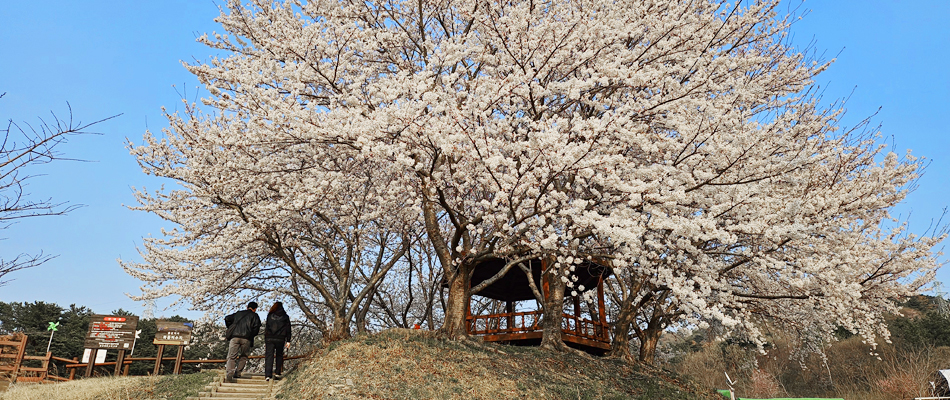
- It has been used as an agricultural land, and later transformed into a resting place for residents because of the lack of utilization due to the development of surrounding area. Hwadong-Pond, located at 324-3 Hwabong-dong, has newly created a nature-friendly waterside park on a total area of ?? 9,824 ㎡ with a budget of 1 billion Won in 2011. Hwadong Pond waterside park has not only promenade but also an observation deck, an ecological wetland, a watermill and a sports facility for simple exercise, and a water fountain in the center of the reservoir.
Dangsa Marine Fishing Park
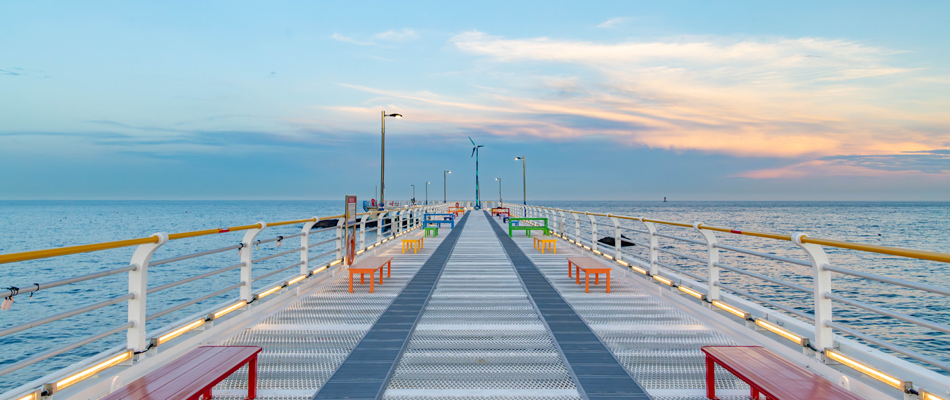
- Location: Yongbawi 1 Gil 58, Buk-Gu, Ulsan
- Opening hours
- - Summer: 09:00 to 18:00,
- - Winter: 09:00 to 16:00
- Fishing schedule is flexible (from 06:30 to 20:00)
Goheon Park Sang Jin Go to website
Rural Experience Village of Nongso Hanwooltari Go to website
Wooga marine leisure experience village
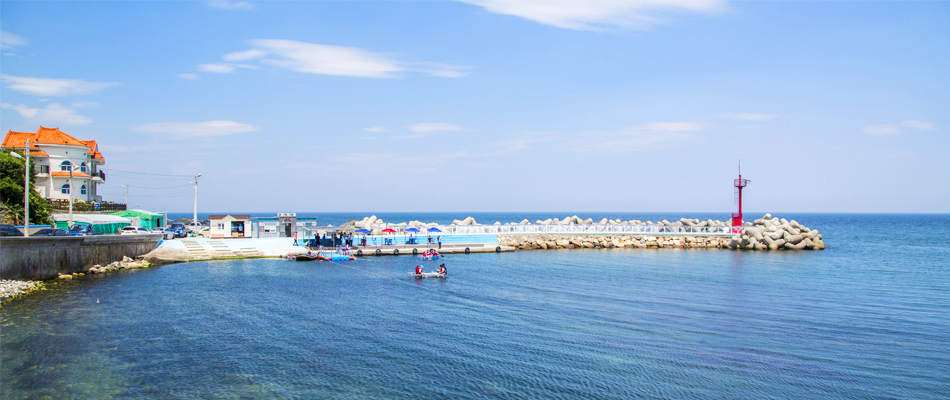
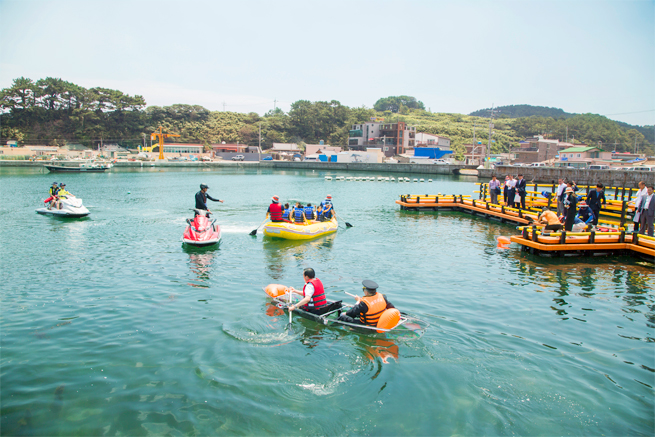
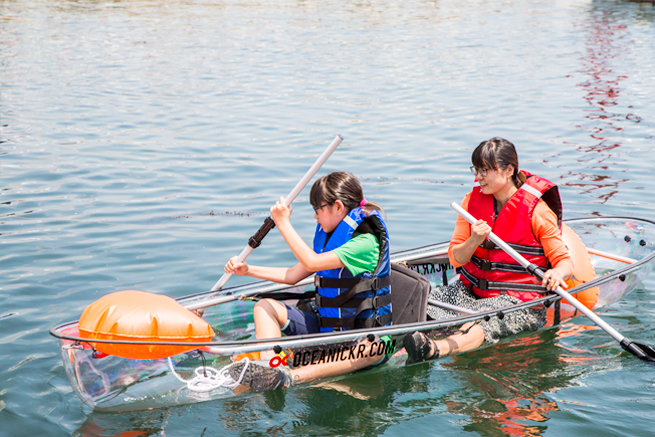
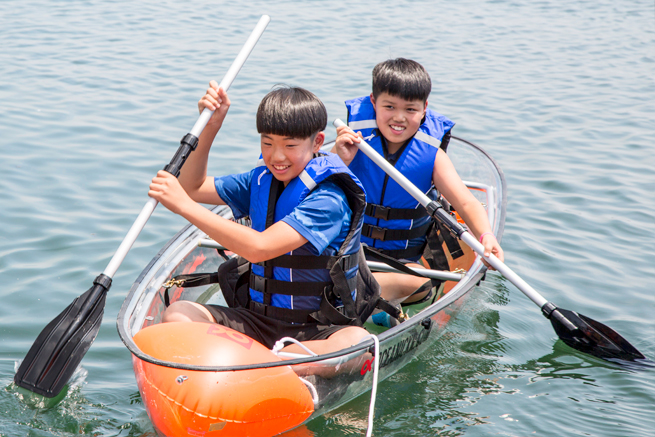
- In a hot summer vacation, water parks and beaches are attractive, but what about a marine leisure experience village where you can have various experiences with the water Please come to the village of Wooga-marine leisure experiential village where you can experience a transparent canoe on which you can see the clear view of the sea, a rafting experience on a rubber boat in the sea, and a snorkeling experience where you can feel the cool sea.
- Location: Wooga Experience Village (Wooga Port) - Front of Wooga-1 Gil 45-2
- Hours: 10 am to 5 pm
Songjeong Park Sangjin Lake Park
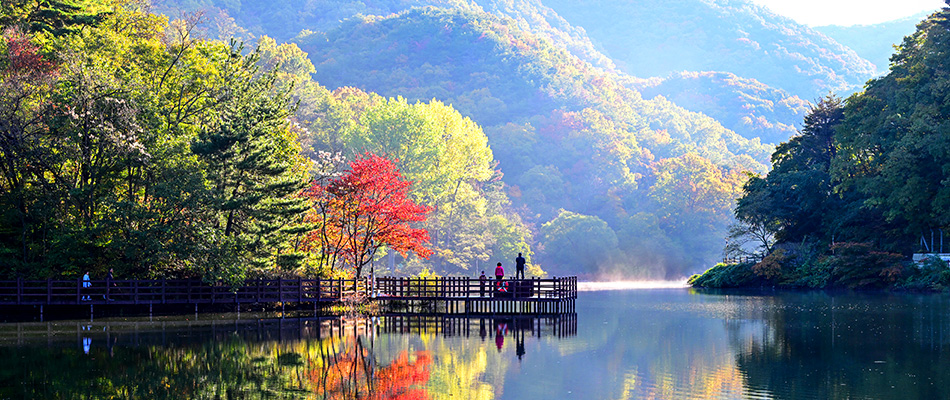
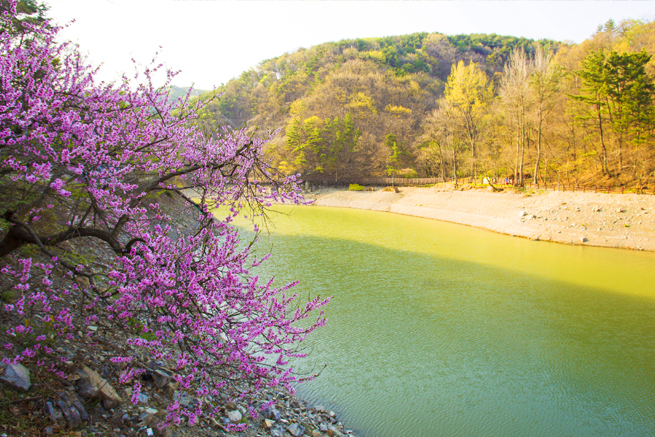
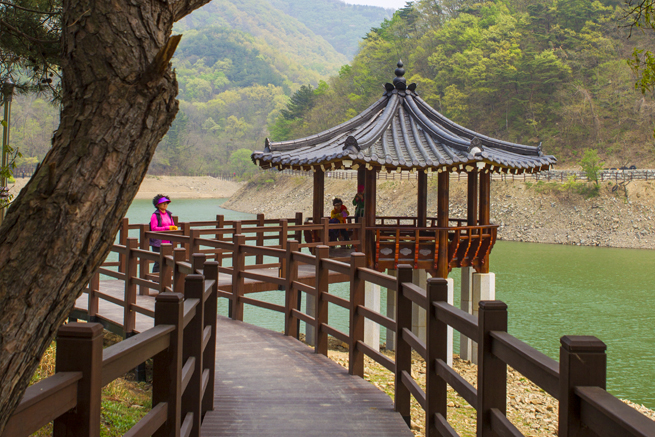
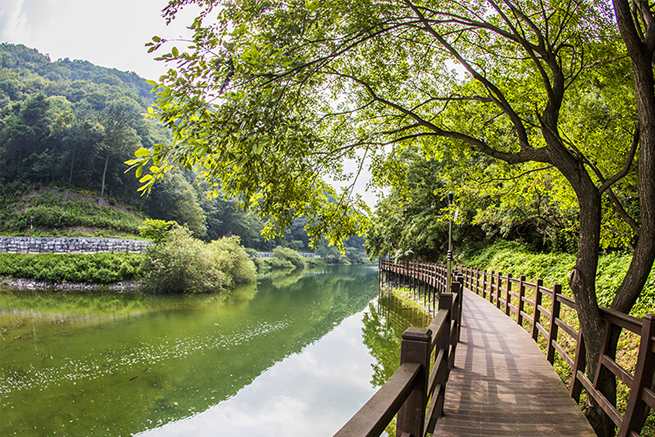
- Park Sangjin Lake Park, located in Songjeong 4-9 Songjeong-dong, Buk-Gu, is a park named after Park Sang-jin's name. It was created as an eco-friendly hydrophilic space in the center of the Songjeong reservoir where the natural scenery is beautiful. From 2010 to 2014, a management office and an observatory, 3.6km walkway, a multipurpose yard, an outdoor study hall and a labyrinth garden were built on an area of ?272,000 m2. Recently, a rooftop garden on the roof of the management office and a wetland garden were created to make environment friendly waterside park based on the natural resources of the region.




